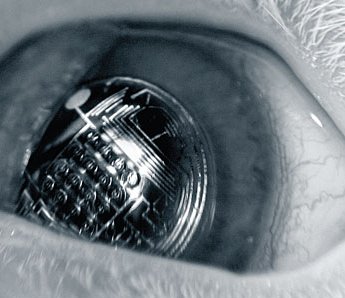Researches are developing a new generation of contact lenses built with very small circuits and LEDs. They promises bionic eyesight in the future. Bionanotechnology researcher Babak A Parviz writes about his research toward producing a computer interface in a contact lens at IEEE Spectrum article Augmented Reality in a Contact Lens. The author states that, ‘All the basic technologies needed to build functional contact lenses are in place,’ and details what refinements and advances will be necessary to bring this technology to reality. The picture below is from the article.

26 Comments